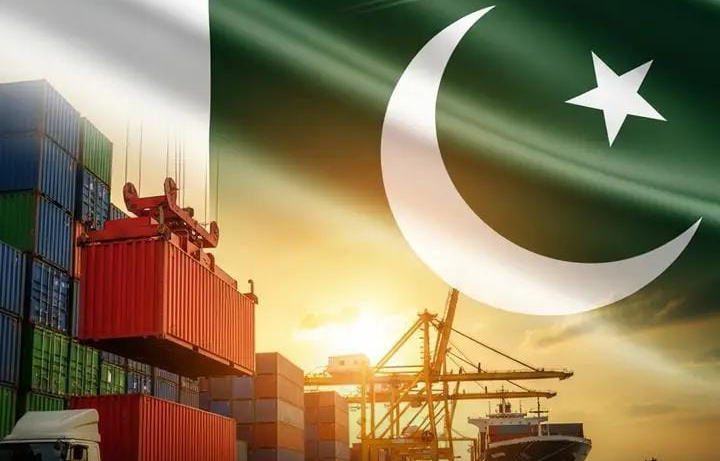A Worrying Economic Setback
Pakistan’s economy took a hit in August 2025, as exports dropped by a steep 10% to $2.41 billion, down from $2.68 billion in July, pushing the trade deficit to a hefty $2.86 billion. The Pakistan Exports Plunge, reported by the Pakistan Bureau of Statistics (PBS) on September 2, 2025, signals tough times ahead, with imports surging 14.23% to over $11 billion in the first two months of the fiscal year. This growing gap between exports and imports has sparked concern among policymakers and citizens alike.
The Pakistan Exports Plunge news has set social media abuzz, with netizens expressing worry over the economy while others call for urgent action. As Pakistan grapples with flood recovery and global economic challenges, this trade setback is a wake-up call. Here’s the full story on the Pakistan Exports Plunge, its impact, and what’s next for the nation.
What Sparked the Pakistan Exports Plunge?
The Pakistan Exports Plunge was detailed in a PBS report on September 2, 2025, showing a 12.49% year-on-year decline from $2.76 billion in August 2024 to $2.41 billion in August 2025. Meanwhile, imports climbed 6.4% to $5.29 billion from $4.96 billion the previous year, widening the trade deficit by 8.81% to $2.86 billion, up from $2.20 billion in August 2024. The Pakistan Exports Plunge was driven by a combination of factors, including global demand slowdown and domestic supply chain issues.
READ NEXT: Wildlife Rangers Rescue Deer From Flood-Hit Regions In Punjab
For the first two months of fiscal year 2025-26 (July–August), exports inched up by just 0.65% to $5.10 billion, while imports surged 14.2% to $11.12 billion, pushing the trade deficit to $6.01 billion—a 29% jump from $4.66 billion last year. The Pakistan Exports Plunge reflects ongoing challenges, like reduced textile exports, a key sector, and disruptions from Punjab’s floods, which have strained logistics and production.
Why This Matters
The Pakistan Exports Plunge is a red flag for Pakistan’s economy, already under pressure from a devastating flood crisis and shrinking foreign reserves. Exports are a lifeline for the country, supporting jobs and balancing trade. The textile sector, which accounts for over 60% of exports, has been hit hard by high energy costs and supply chain bottlenecks, contributing to the Pakistan Exports Plunge. A wider trade deficit puts strain on the rupee, which closed at Rs281.72 on September 2, 2025, and could worsen inflation.
This economic dip comes as Pakistan negotiates a $1 billion IMF loan tranche, with talks set for late September. The Pakistan Exports Plunge underscores the need for reforms to boost competitiveness, especially as imports of energy, machinery, and raw materials outpace export growth. Amid flood recovery, with 760,424 people evacuated, the Pakistan Exports Plunge adds urgency to addressing structural issues to stabilize the economy.
Public Reaction and Social Media Buzz
The Pakistan Exports Plunge news sparked a flurry of reactions on social media on September 2, 2025. X posts from Karachi to Islamabad buzzed with concern, with one user writing, “Pakistan Exports Plunge by 10%? This is scary for our economy!” Another shared, “Floods, deficits, now this time for action!” Viral charts showing the trade gap trended, with hashtags like #PakistanExportsPlunge gaining traction. Some users urged, “Support local industries to fix this!”
Business owners voiced frustration, with one X post noting, “Textile exports are dying—govt needs to step up!” Others remained hopeful, saying, “We’ve bounced back before; let’s tackle this Pakistan Exports Plunge.” The buzz reflects widespread worry but also a call for solutions, as Pakistanis rally for economic recovery amid flood relief efforts and global challenges.
Challenges Amid the Economic Dip
The Pakistan Exports Plunge faces tough hurdles. Floods have disrupted supply chains, especially in Punjab, a hub for textile production, with 565,000 acres of crops damaged and logistics hampered. Global demand for Pakistani goods, like cotton and rice, has softened due to economic slowdowns in key markets like the US and EU, worsening the Pakistan Exports Plunge. High energy costs and an appreciating rupee, despite IMF calls for flexibility, have eroded export competitiveness.
Policy challenges loom large. The government’s trade liberalization, including a 52% import tax cut over five years, has boosted imports, but exports haven’t kept pace. The Pakistan Exports Plunge highlights the failure of initiatives like the Planning Commission’s Uraan Pakistan to significantly lift exports. Coordinating flood relief with economic reforms, especially with 506 relief camps running, stretches resources thin, making it harder to address the trade gap.
A Glimmer of Resilience
Despite the setback, the Pakistan Exports Plunge has sparked determination. Exporters are adapting, with some shifting to high-value products like IT services, which saw a 9.85% rise to $6.24 billion in FY25. The Pakistan Exports Plunge has prompted calls for incentives, like the Ministry of Maritime Affairs’ 50% cut in port charges for export containers, effective July 1, 2025. These efforts show Pakistan’s resolve to fight back.
Communities are rallying, with stories like the Wildlife Rangers’ deer rescues inspiring hope amid the floods. The Pakistan Exports Plunge is a challenge, but Pakistan’s history of resilience—seen in service export growth and remittance inflows offers optimism. Business leaders on X are pushing for innovation, with one posting, “Let’s turn this Pakistan Exports Plunge into an opportunity!” This spirit drives hope for recovery.
What’s Next for Pakistan’s Economy?
The Pakistan Exports Plunge demands urgent action. The government is under pressure to boost exports through subsidies and energy cost relief for industries like textiles. The upcoming IMF talks will focus on stabilizing the rupee and curbing imports, which could ease the trade deficit. Long-term plans, like investing in tech exports and improving logistics, aim to reverse the Pakistan Exports Plunge and strengthen the economy.
Pakistanis are urged to support local products and follow PBS updates for economic trends. The Pakistan Exports Plunge is a call to unite for growth, balancing flood recovery with trade reforms. As the nation navigates these challenges, resilience and innovation will be key. Stay tuned for updates on the Pakistan Exports Plunge and Pakistan’s economic journey.



